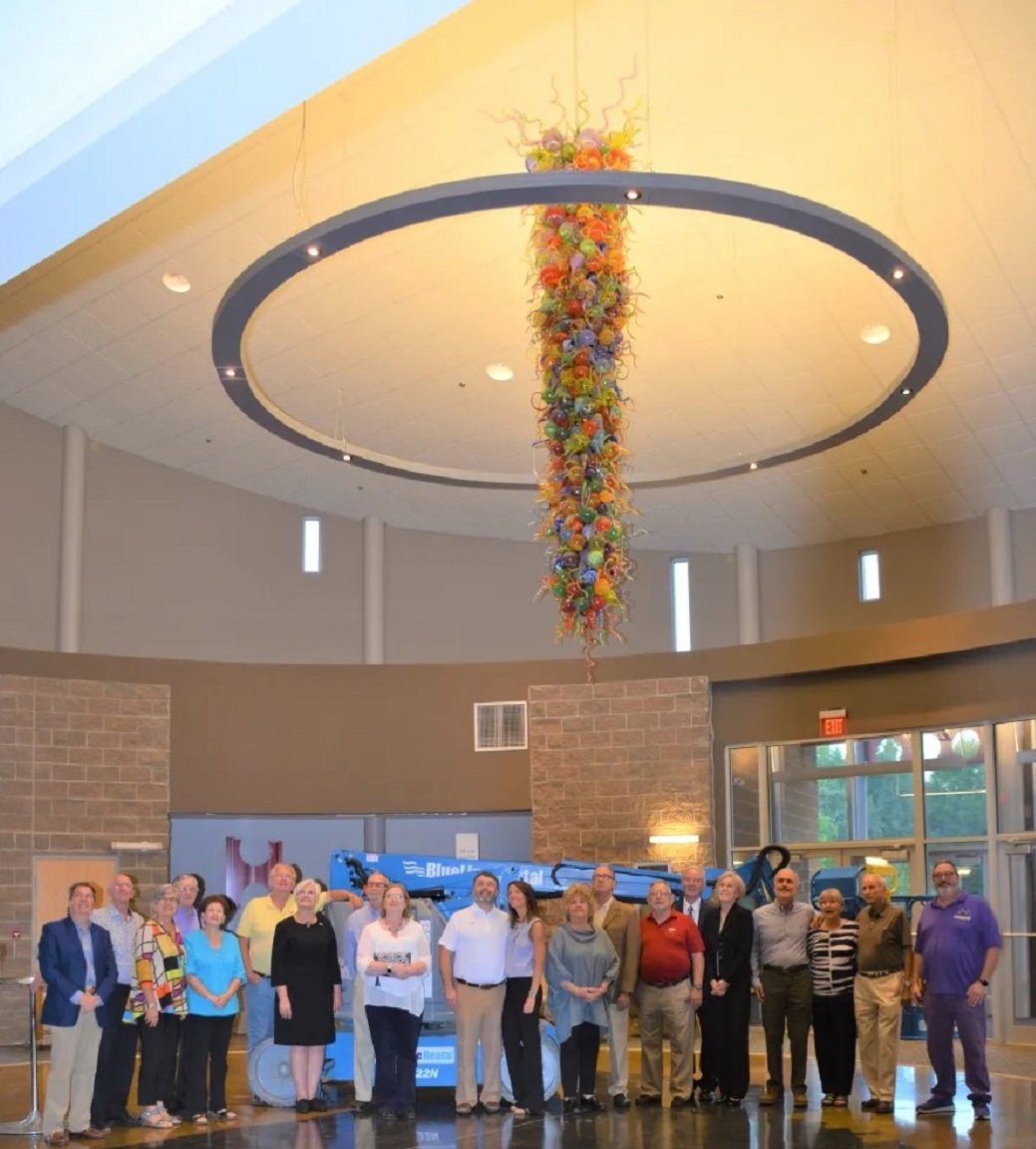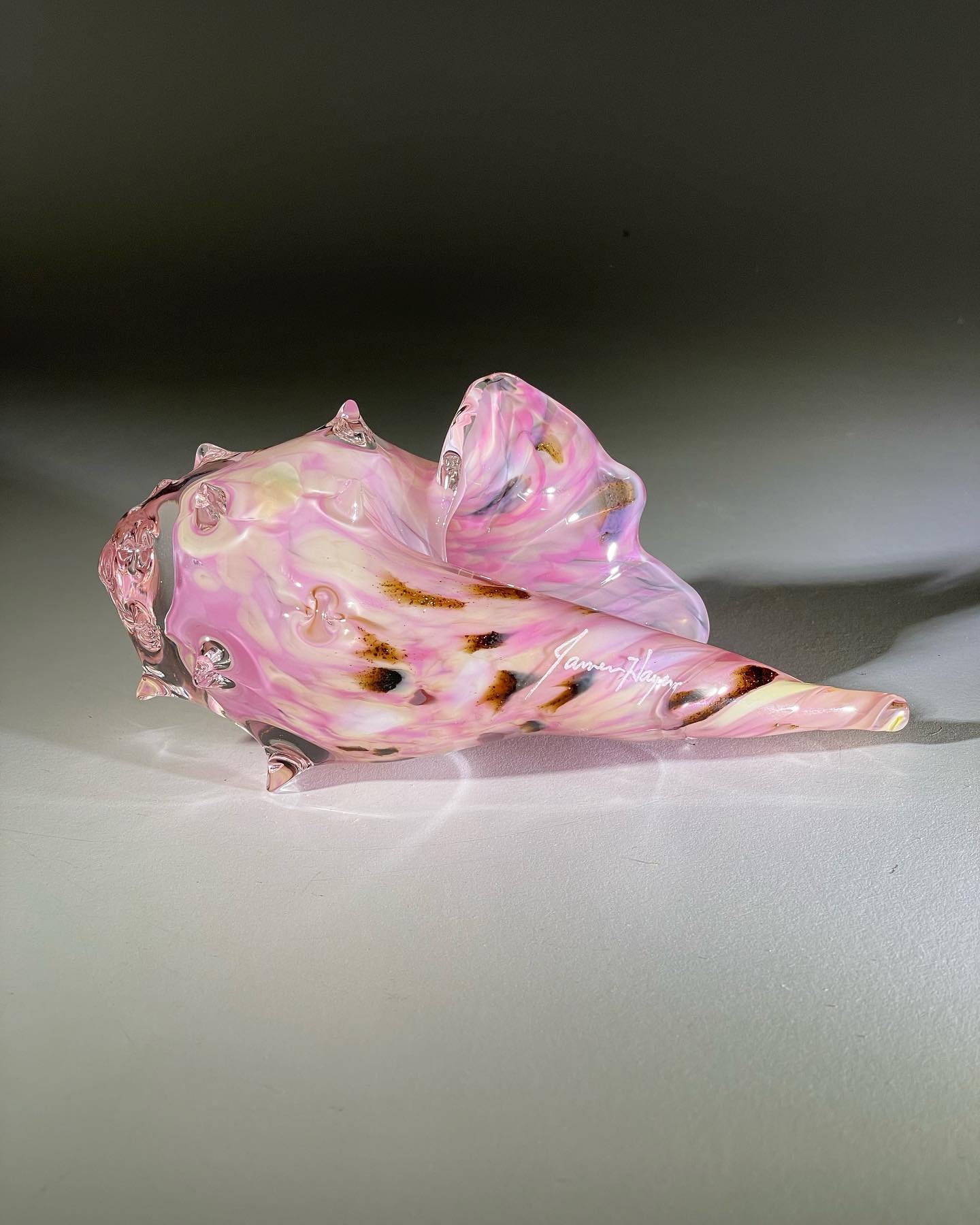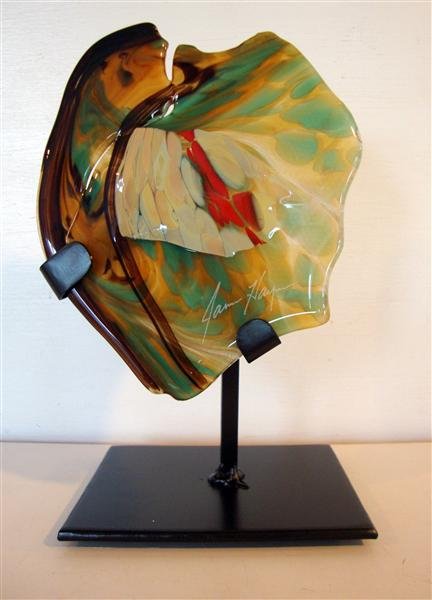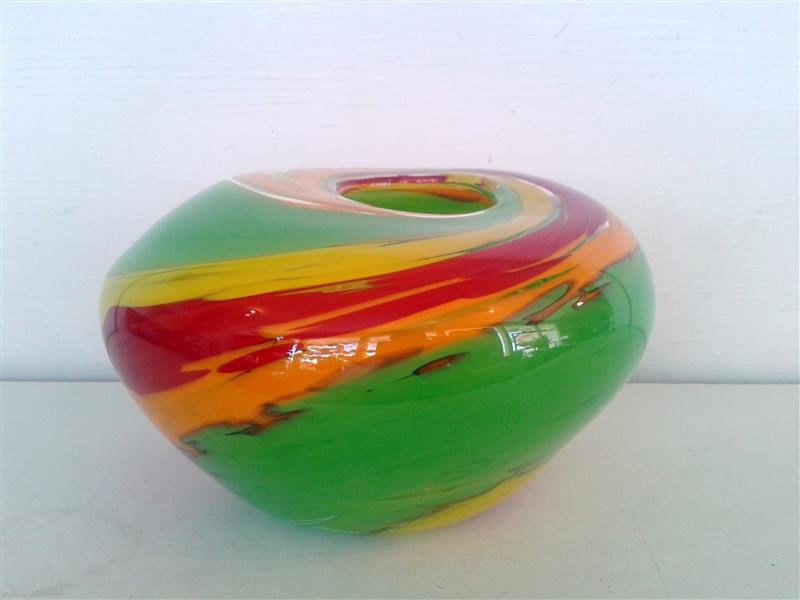Interview with artist James Hayes
James Hayes is a glass artist living and working in Pine Bluff, Arkansas. He is internationally recognized for his glass installations and has been featured in numerous publications. More of James’ work can be found in galleries and gift shops across Arkansas and beyond including Art Group Gallery and Gallery 26 in Little Rock, Red Door Gallery in North Little Rock, and at his website hayesartglass.com.
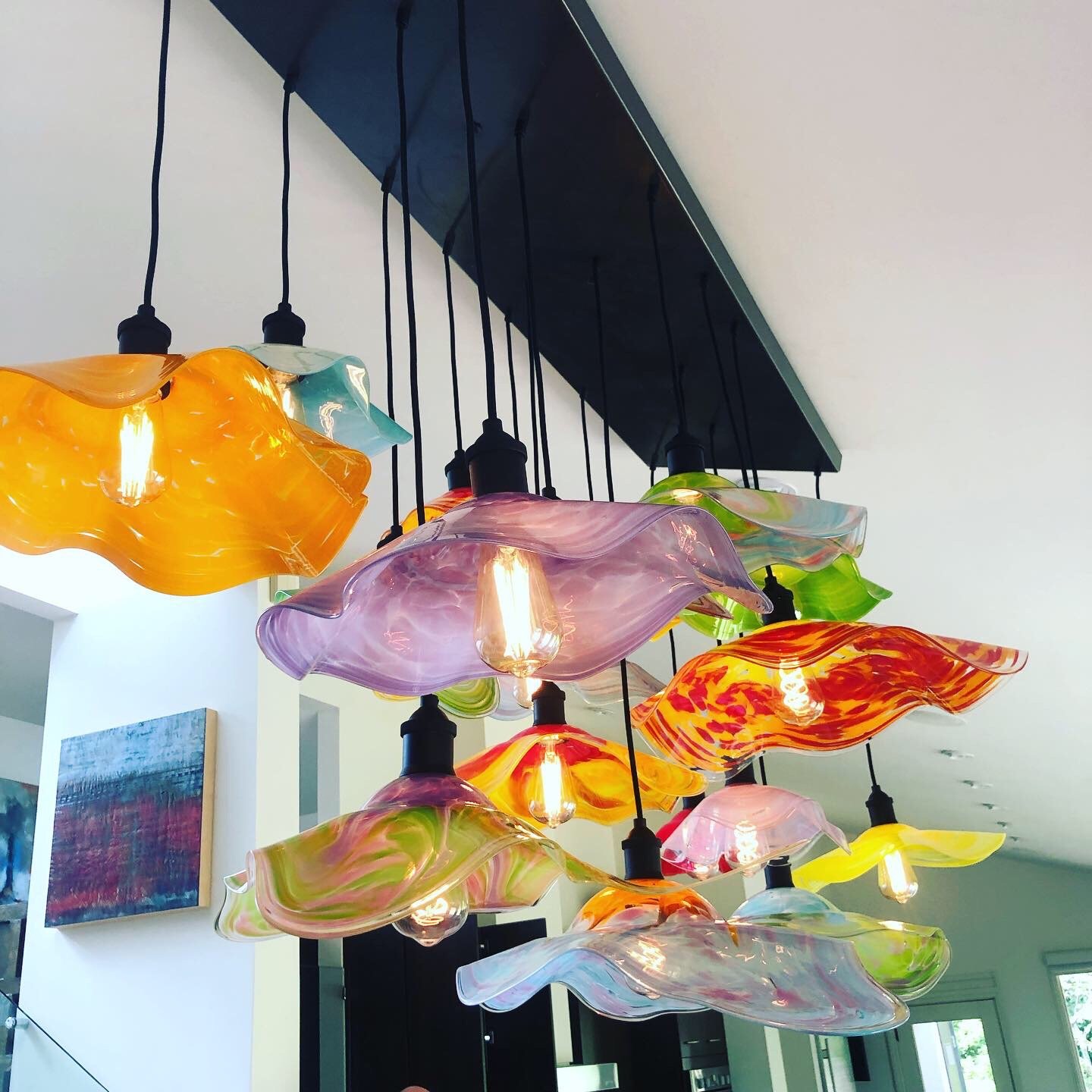
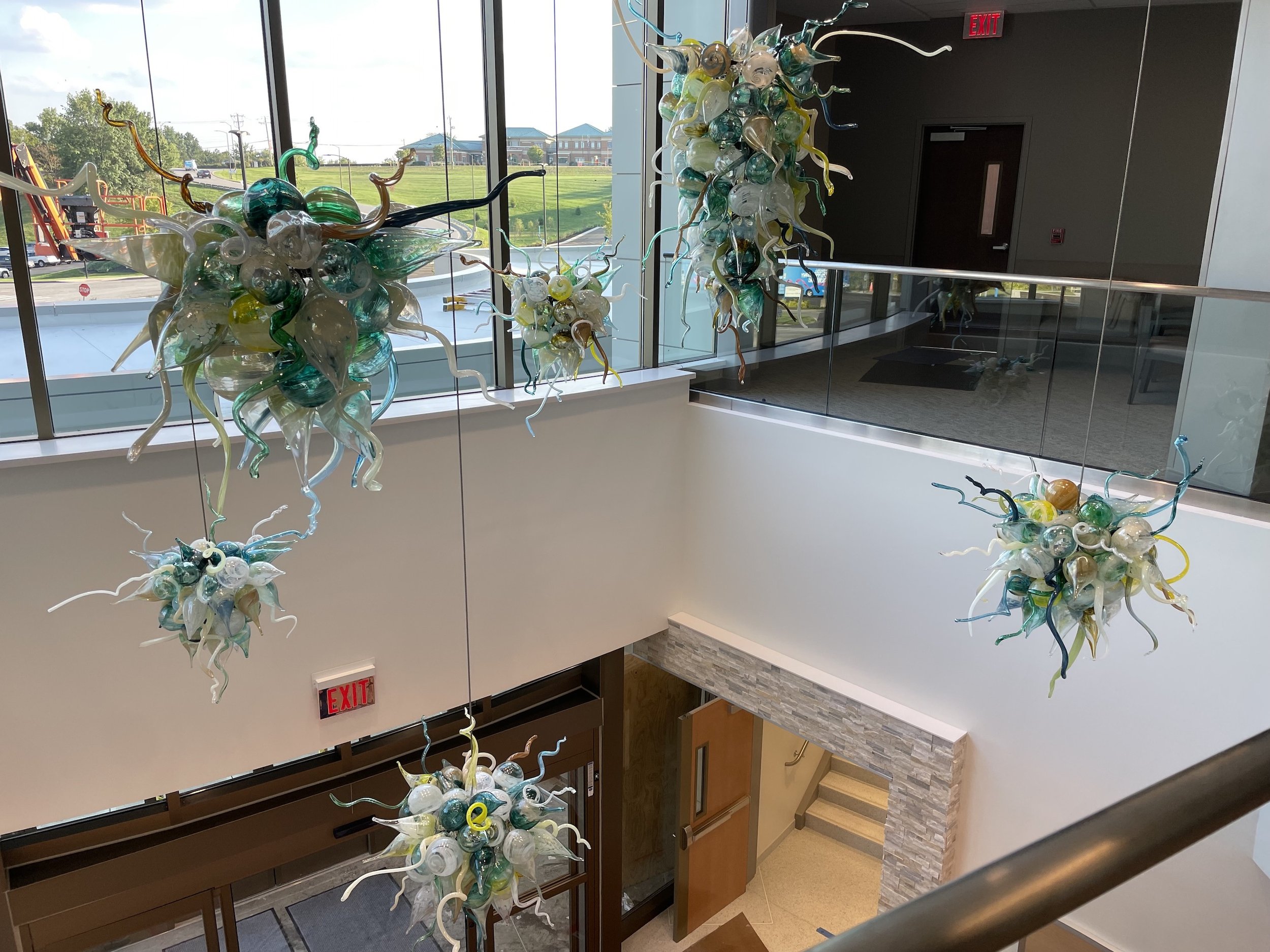
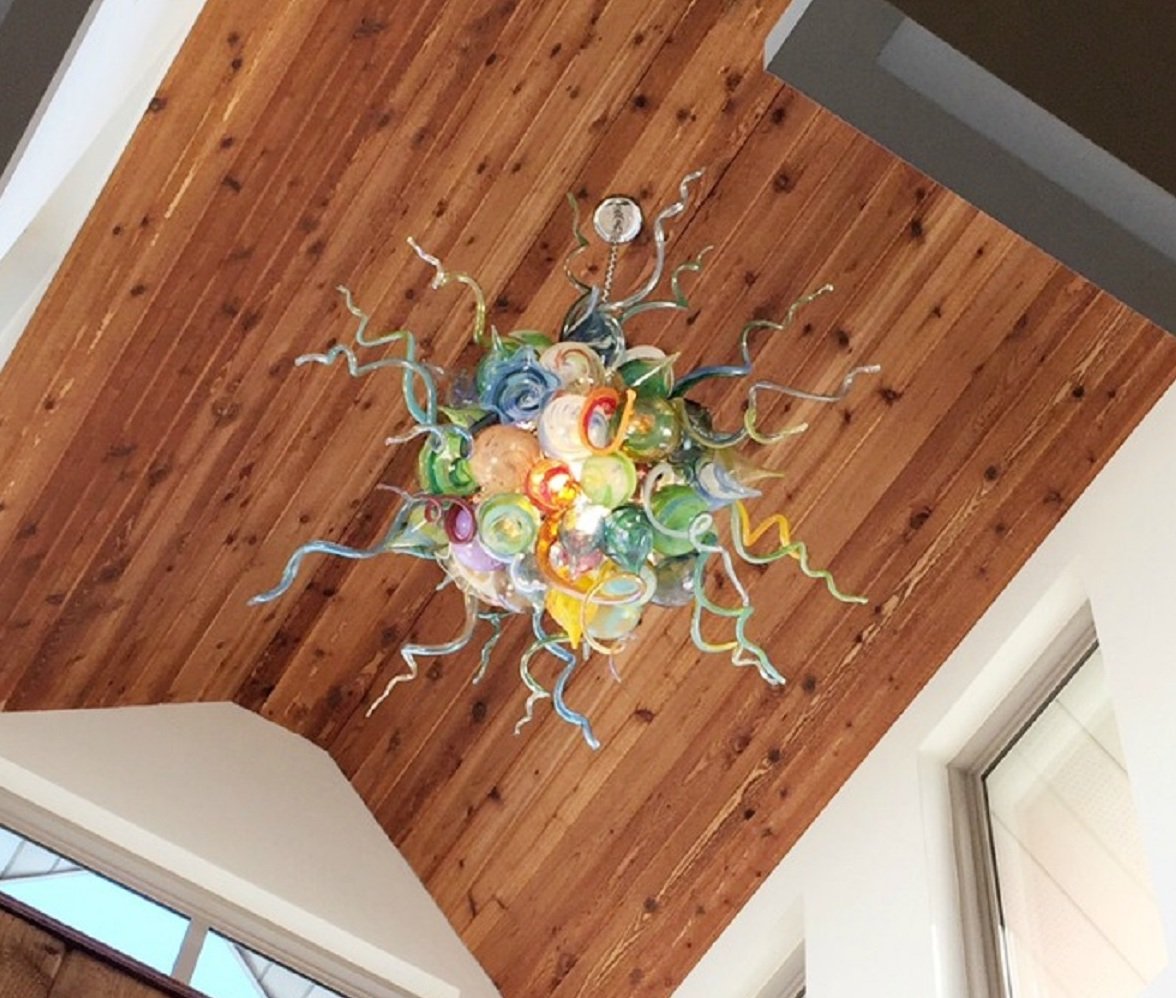
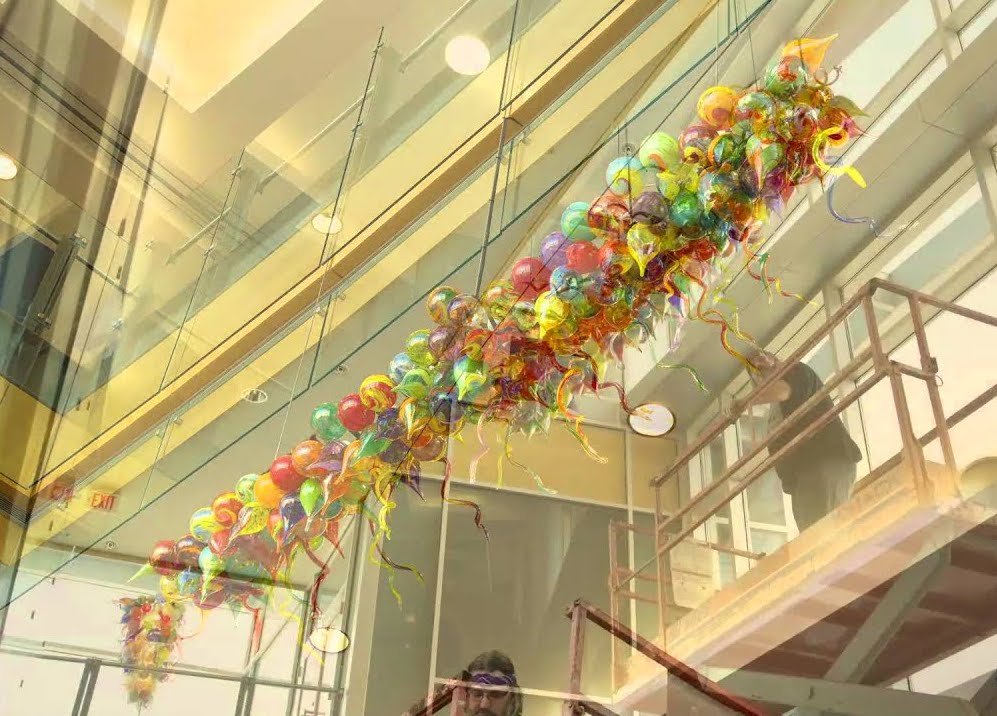
AAS: James, you are an Arkansas native, from Pine Bluff. Did you know as a kid that you wanted to be some type of artist?
JH: I did know. My sisters and I were always doing creative things to make money. We made our own carnival once, and we loved making tree houses. Another memorable experience, for me, was our mother taking us to the county fair at Hestand Stadium here in Pine Bluff. We went and we looked at all of the art being judged. She let each of us pick out our own piece of art to buy. Later after I decided that was what I wanted to do, my father told me that if I wanted to be an artist, I may want to also study business and marketing. So, I did.
AAS: What types of art did you do while at Hendrix College?
JH: I enjoyed learning all there was to know about art. I took many classes that involved sculpture, print making, painting, ceramics, and, of course, art history. While at Hendrix, I had many other experiences that shaped who I am today. I was a four-year letterman on the golf team. While playing on the team the golf coach gave me the nickname James “Purple” Hayes. I used to hate it, but now I have come to embrace it. I even use it in my marketing. I met my current wife, Meg Daniel Hayes, while at Hendrix. Life took us separate ways, but later on in life we reunited at Gallery 26 in Little Rock. I asked her for her phone number and the rest is history. We just celebrated our 14th anniversary in Paris, France.
AAS: When did you discover glass blowing?
JH: To go back to the beginning, in 1986, I went to a Grateful Dead concert. After the concert, I went to Jamestown, Virginia. It was there that I saw glassblowing for the first time. I was intrigued by this new art form. Then, after I graduated from Hendrix College in the spring of 1988, I signed up for a glassblowing class at the former Arkansas Arts Center Museum school. I kept taking the class over and over until I could buy my own equipment. In 1986, luck was in my favor when I entered a golf tournament at the Rosswood Country Club. On Hole number six that was 156 yards, I used a six iron and I made a hole in one. The prize was a new car. I had won a brand new 1986 Black Honda CRX SI. I already owned a car, so I sold it. I put that money in savings and I added to it till I had just enough. After saving for seven more years, I finally had enough and bought the equipment and formed my own company in 1993.
Optic Wavy Bowl, glass, 18”w x 12”h
AAS: I want to ask you first about the bowl form. You’ve done some wonderful table bowls as well as wall plates like your installation at CARTI in Pine Bluff. Do you think your style or aesthetic in making bowls or any glass form has changed over the years?
JH: The bowl form, for me, has not changed much if any over the years. It was one of the first things that I learned to blow. They are so special to me. I love making bowls, since they are a symbol of sharing and friendship.
CARTI Pine Bluff Wall Bowl Installation, glass and stainless steel, various sizes
CARTI Installation with James and Meg Hayes
AAS: You have studied all around the world and have just come back from Lucerne, Switzerland. Do you attend these workshops to learn new techniques or mostly to exchange ideas and experiences with other notable glass artists?
JH: Yes, I have studied all over the world. Last year, I went to Istanbul, Turkey to study with Karen Willenbrink. I like to do something educational every year. This past spring, I took a class in Kansas City, Kansas with Rob Stern and learned new sculptural techniques. There is always something new to learn and I am eager to learn it.
AAS: Tell me about the Hong Kong Kinetic Glass Installation. It looks quite fabulous!
Hong Kong Kinetic Glass Installation, glass and electrical components
JH: I received and email from the New Town Plaza Mall in Hong Kong, which I initially thought to be a scam. However, my wife, Meg, investigated it and contacted the man that did the art installation the previous year. She found that it was a real opportunity. I quoted them a price and then they literally asked for my bank account information, so I sent it to them. Luckily, it turned out to be real. The main pieces that I blew for the installation were the Christmas ornaments and the giant balls. A team of glass artists produced the majority of the glass installation and the mall installed all of the art glass. There was a hot shop studio created for me in the mall. Each morning, I did interviews with the media. Then, each afternoon, I conducted glass blowing classes with mall patrons. It was truly a fabulous, eye-opening experience. It was such an honor to be chosen to do this event.
AAS: I next want to ask you about your chandeliers. They are all remarkable. I retired from UAMS a few years ago and often went through the Psychiatric Research Institute to see your chandeliers and wall bowls there. How are your chandeliers constructed and how much flexibility for design and color are you given when you are doing a commission for a large space?
JH: The chandeliers are one of my favorite things to create. Most of them are customized to the clients wishes. They also allow me to travel all over the United States to install them. Traveling is one of the main reasons I wanted to become an artist. I love to see new places. Each blown piece is hand wired to a metal frame that usually contains light bulbs to illuminate the chandelier. The current piece I am working on is to be installed in The Orthopaedic and Spine Hospital at UAMS. The client typically is either very specific about what they want, or they allow me to be creative with it. There seems to be no in between. Each client is as different and unique as the pieces that I create for them.
Arts and Science Center of Southeast Arkansas Chandelier, glass, electrical components, stainless steel, mild steel, 4’w x 6’h.
AAS: You also have a large chandelier installation at the Arts and Science Center of Southeast Arkansas. Tell me about that installation.
JH: It was actually challenging to install this Arts and Science center chandelier. We had to figure out how to anchor it. A contractor figured this out for me and hung the frame. I used a scissor lift to get up to the frame and hang the pieces. It is comprised of about 160 parts total.
AAS: In Fayetteville, you installed quite a different chandelier. It is monochromatic grayscale - and horizontal. I love the effect. What is the story behind that chandelier?
JH: This chandelier is in a three-story condo on the square in Fayetteville, Arkansas. The owners had me install a bright multicolored chandelier in their dining room, and then had me put this horizontal enamel white chandelier in another part of the house. It hangs in the open space between the first and third floor. They wanted there to be a great distinction between the two pieces. It was fun to create it. Monochromatic things are my favorite because there is not much to think about when making it. I just turn up the music, make the parts, and have fun. They do create such a statement. I have made an all clear chandelier once for Margaret Clark of Little Rock. She liked it because she could look through it and see her grandchildren in the pool while they swam.
AAS: Your work is not just for large-scale corporate installations, of course. You also do pieces for private homes. Pieces like your wall sconces are true statement works of art. Do you regularly work with designers or homeowners to incorporate some special pieces into a home?
Wall Sconce, glass, electrical components, stainless steel, mild steel, 2’w x 2’h
JH: I work with designers and homeowners all the time. A lot of the work that you see is commissioned. More often than not, however, it is the homeowner that I work with but occasionally, I work with just designers. I actually have several firms that I work with on a regular basis.
AAS: Tell me about your studio in Pine Bluff. Do you offer instruction to glass artists or internships?
JH: In 1996, I purchased the Ridgway Dairy Farm. It is the namesake for the road that my studio and hot shop are located. I converted the old milking barn into the hot shop and studio and the old refrigeration shed into my welding area. I like that the building is historic and current at the same time. The hot shop has one glass furnace. It is heated to 2,058 degrees, and it has a large crucible inside it that can hold up to 300 pounds of molten glass. We have one glory hole that we use to keep the glass hot while we work with it. We also have six annealing ovens to keep the glass at 950 degrees while it anneals and then allows the glass to slowly cool off to where you can remove it. This process takes around 12 hours.
There is lots of room outside for people to park and gather for when we have events here. When we have shows, I offer glass blowing experiences to the people that attend. We have a signup sheet and people sign up for 15-minute slots each. I help them make their glass piece that they can pick up the following workday. I have donated many glass blowing experiences to charities, and the winner of the auction item and often a small group come to my studio for a private experience. I have also been known to offer private experiences for birthdays and other special occasions. I get to meet a lot of great people doing these. And yes, I love to work with interns and hire young art school hopefuls the summer before they go off to college or those heading to grad school. They are so full of energy and drive to create. I have had around six so far. I chose to stay in Pine Bluff, because it is my home. It is very special to me. I love the industrial nature of this city and the people here. I am also a member of the Pine Bluff Country Club where I can go and relax and play golf with my friends, which I do regularly.
